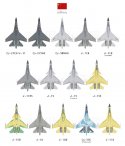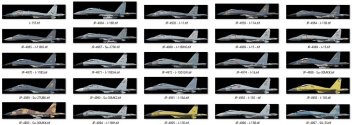This is actually a pretty good question, and one I've pondered for the last few years.
There's a few reasons, IMO:
1: the twin seater and (potential) single seater "domestic advanced Flankers" are actually separate developmental variants of each other. Specifically, the twin seater domestic advanced Flanker is the J-16 (which as we all know has been in production for multiple years now going back to early/mid 2010s). Meanwhile, the single seater domestic advanced Flanker that exists as an "option" is the J-11D. However, the J-11D is not a single seat variant of the J-16, and the J-16 is not a twin seat variant of the J-11D either. Meaning it's not just a matter of producing a single seat variant of the J-16 if they wanted one -- it's not that easy.
2: then there's the question of what a new build single seater advanced Flanker airframe would offer. For the PLA, they already have many hundreds of single seat J-11Bs in service, whose airframes are relatively young, and can be given MLUs to introduce more advanced subsystems. We see that with the J-11BG/BHG upgrades that include an AESA radar, among likely other upgrades.
3: then there's the question of what does a twin seater J-16 offer that a potential single seater advanced Flanker may not offer? IMO, the most valuable thing the J-16 brings, in context of the present day (and future) air combat landscape, is the second pilot. Specifically, as air combat becomes increasingly networked, and as UAVs and UCAVs become introduced in larger numbers in a MUMT fashion, there would be some benefit in having a large number of modern, capable airframes that can do various command and UAV/UCAV control tasks, while also simultaneously being able to conduct combat at the same time. Now, as technology develops of course automation means that a single person will be able to do more command/control tasks and command more UAVs/UCAVs simultaneously at any one given time -- however at the end of the day you still need a human being to take in the information and make the tactical decisions even if things are highly automated. The number of human beings will likely still present a practical rate limiting step for command/control and UAV/UCAV control in the near future.
4: lastly, the J-20 is currently in production as a single seat heavyweight twin engine air superiority (and multirole) fighter, and of course far superior to J-11D in every domain that is relevant. One would ask why build a land based, single seat twin engine air superiority/multirole fighter that is based on a 4th generation airframe, when you could build a J-20 instead, especially given current J-20As and a single seat advanced Flanker (like J-11D) would both use the same WS-10 engines anyhow.
... or putting the answers more briefly:
1: building a single seat advanced Flanker isn't as straight forward as we think
2: J-11BG upgrades exist, and are the "single seat advanced Flanker"
3: J-16s offer more useful growth potential into the near future of air combat due to the benefits of its second pilot
4: J-20 already exists as a single seat heavyweight twin engine fighter in production that is superior to J-11D in every single way, and uses the same engines, to boot
Given all that, I think there's just no real good argument for why the PLA "needs" to build new single seat advanced Flanker airframes (like J-11D). So the best choice is continuing to build J-16s which have an existing large scale support/logistics system, will enjoy a long term support/upgrade pathway, and performs good enough for the A2A and strike mission, and has the second pilot that can offer benefits for future command/UAV roles.
Now, there have been some rumours that the PLA might be interested in J-11D, but to date over the years we've not seen evidence of this.
If the PLA does buy J-11D, then it might mean that they value the slightly more capable performance and air to air focus that J-11D may offer compared to J-16, to be willing to introduce a new Flanker variant into the fleet... but at the moment, in context of where the PLA is headed (large scale procurement of 5th generation fighters and new build 4.5th gens taking a backseat), I can't see the benefits of introducing J-11D outweighing its complexities and costs.
=====


